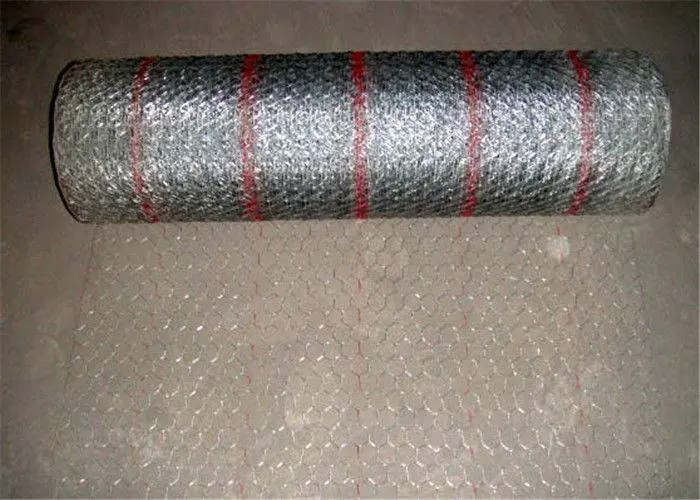Stucco netting, also known as stucco wire, plaster netting, or metal lath, is a type of wire mesh used as a reinforcement layer in stucco wall systems.
It provides a strong base for the stucco to adhere to and helps prevent cracks, sagging, or separation from the wall surface.
Typically made from galvanized steel wire, stucco netting is installed over building paper or insulation before applying the base coat of stucco.
It is an essential material in both residential and commercial construction, especially in exterior wall finishes.
Stucco netting comes in various styles and materials to meet different project needs. Below are the most common types:
a. Galvanized Stucco Netting
Made from hot-dip galvanized steel.
Offers excellent corrosion resistance and durability.
Commonly used for exterior stucco applications exposed to weather.
b. PVC-Coated Stucco Netting
Features a vinyl coating for enhanced protection against rust and chemicals.
Ideal for coastal or high-moisture environments.
Provides smoother handling and easier installation.
c. 17-Gauge or 18-Gauge Stucco Netting
Refers to the wire thickness.
17-gauge netting is stronger and used for heavy-duty applications.
18-gauge is lighter, more flexible, and easier to shape around corners.
d. Self-Furred Stucco Netting
Has built-in dimples or indentations that hold the netting away from the surface, allowing the stucco to embed fully.
Saves time since no additional furring strips are needed.
e. Flat Stucco Netting
Lies flush against the wall and may require furring tools or spacers for proper installation.
Often used for interior or controlled-environment projects.

Proper installation ensures that the stucco finish bonds securely and lasts for years. Here’s a general step-by-step guide:
Prepare the Surface
Clean the wall and install a weather-resistant barrier (WRB) such as building paper or house wrap.
Make sure the surface is smooth and dry.
Position the Netting
Unroll the stucco netting horizontally across the wall.
Overlap adjacent sheets by at least 1 inch (25 mm) at the sides and 2 inches (50 mm) at the ends.
Secure the Netting
Attach the netting to studs or sheathing using galvanized nails, staples, or washers.
Fasten every 6 inches (150 mm) vertically and horizontally for strong support.
Trim and Adjust
Cut off excess wire with tin snips or pliers.
Make sure corners, edges, and openings (like doors and windows) are well-covered.
Apply Stucco
Once secured, apply the scratch coat of stucco directly over the mesh, pressing it firmly so it bonds with the wire.
Follow with the brown coat and finish coat as per standard stucco application.
a. Structural Support
Stucco netting reinforces the base coat and ensures the plaster adheres uniformly across the wall surface, reducing the risk of cracks and bulging.
b. Enhanced Durability
By holding the stucco in place, it helps maintain a strong and long-lasting wall finish that withstands weathering and impact.
c. Prevents Cracking and Shrinkage
The mesh evenly distributes tension, minimizing stress points that cause surface cracks.
d. Improved Bonding
The open wire design allows the stucco to grip tightly, resulting in a more secure attachment to the substrate.
e. Easy Installation and Adaptability
Flexible and lightweight, stucco netting can easily wrap around corners, curves, and irregular surfaces, making it suitable for various wall types.
Stucco wire netting is recommended for:
New stucco construction — provides the foundational layer for exterior plaster systems.
Stucco repairs or reapplication — helps the new stucco bond effectively to old surfaces.
Insulated wall systems (EIFS) — adds structural integrity when applying stucco over foam insulation.
Masonry or concrete walls — improves adhesion where direct bonding is difficult.
High-moisture or coastal areas — PVC-coated or galvanized netting helps resist rust and corrosion.
Essentially, anytime stucco is applied over a non-solid or non-porous surface, stucco netting is required to ensure strength and longevity.
Stucco netting plays a crucial role in creating durable, crack-free, and well-bonded stucco finishes.
Whether you’re building a new home, renovating a façade, or repairing damaged plaster, using the right type of netting and installing it correctly ensures professional results and long-term performance.
From galvanized to PVC-coated options, stucco netting provides builders and homeowners with a cost-effective reinforcement solution that enhances both appearance and durability of stucco walls.
Comments
Please Join Us to post.
0